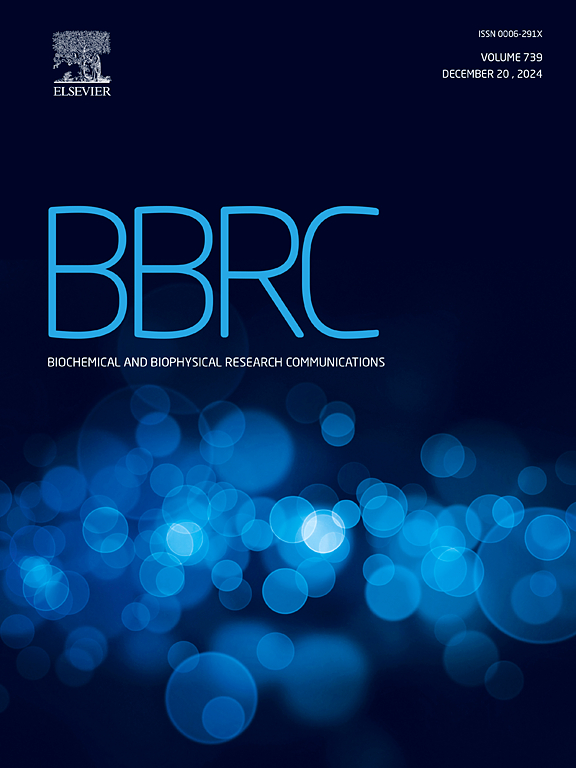利用合成生物甲烷化模块,由大肠杆菌一步将二氧化碳转化为甲烷。
IF 2.5
3区 生物学
Q3 BIOCHEMISTRY & MOLECULAR BIOLOGY
Biochemical and biophysical research communications
Pub Date : 2025-02-01
DOI:10.1016/j.bbrc.2024.151284
引用次数: 0
摘要
生物甲烷化过程被广泛认为是减少二氧化碳排放同时产生甲烷的重要方法。然而,只有少数需要复杂培养条件的微生物被确定为生物甲烷化。在这里,大肠杆菌具有易于培养和多功能底盘的特点,首次进行了生物甲烷化基因改造。系统分析、克隆了古红假单胞菌具有产甲烷能力的nif相关基因簇,并将其整合到合成生物甲烷化模块中。结果表明,携带该合成生物甲烷化模块的大肠杆菌BL21 (DE3)和Rosetta (DE3)具有显著的产甲烷活性,产甲烷量分别达到50 nmol/mL和159 nmol/mL。这一发现为构建生物甲烷化合成菌株提供了一条简单的途径,有助于推进生物甲烷化的基础研究,并有利于进一步利用生物甲烷化的力量进行实际应用。本文章由计算机程序翻译,如有差异,请以英文原文为准。

One-step transformation of CO2 to methane by Escherichia coli with a synthetic biomethanation module
The biomethanation process is widely recognized as a significant approach to mitigating carbon dioxide emissions while simultaneously generating methane. However, only a few microorganisms that required intricate culturing conditions were identified for biomethanation. Here, Escherichia coli that featured easy cultivation and versatile chassis was genetically modified for biomethanation for the first time. The nif-related gene cluster with methanogenic capability from Rhodopseudomonas palustris was systematically analyzed, cloned, and integrated into a synthetic biomethanation module. As a result, E. coli BL21 (DE3) and Rosetta (DE3) carrying this synthetic biomethanation module exhibited significant methane production activity, with methane yields reaching 50 nmol/mL and 159 nmol/mL, respectively. This finding provided a simple route to construct synthetic strain for biomethanation, which would advance the fundamental research and be beneficial to further harness the power of biomethanation for practical application.
求助全文
通过发布文献求助,成功后即可免费获取论文全文。
去求助
来源期刊
CiteScore
6.10
自引率
0.00%
发文量
1400
审稿时长
14 days
期刊介绍:
Biochemical and Biophysical Research Communications is the premier international journal devoted to the very rapid dissemination of timely and significant experimental results in diverse fields of biological research. The development of the "Breakthroughs and Views" section brings the minireview format to the journal, and issues often contain collections of special interest manuscripts. BBRC is published weekly (52 issues/year).Research Areas now include: Biochemistry; biophysics; cell biology; developmental biology; immunology
; molecular biology; neurobiology; plant biology and proteomics

 求助内容:
求助内容: 应助结果提醒方式:
应助结果提醒方式:


